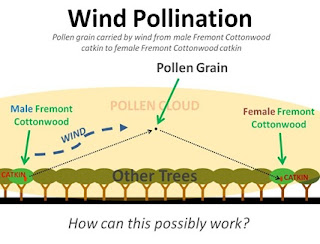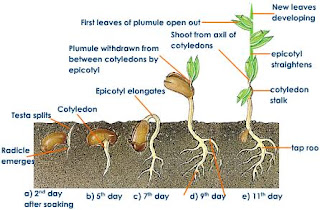OUR ANIMAL
REPRODUCTION:
Reproduction is the ability of all living things
to create other beings similar or identical to them.
Our animal has
sexual reproduction because two individuals produce sexual cells or gametes.
The union of male and female gamete forms a cell, the zygote, which develops
into a new being.
This type of
reproduction has:
- advantages:
increases diversity because descendants are not identical to either of their
parents but they have characteristics of each of them.
-
disadvantages: the parents must come together to reproduce and that is not
always easy.
Animals can
display or not sexual dimorphism. This means that some species, in addition to
having different reproductive organs, males and females are very different in
their physical appearance.
Our animal
doesn´t display sexual dimorphism because the two sexes differ only in their
sexual organs.
Cellular reproduction:
Our animal and
our plant have binary fission that means that the mother cell divides into two
daughter cells of identical size. In this way our animal and our plant multiply
its cells.
SEXUAL REPRODUCTION:
Sexual
reproduction in animals involves two parents who have sex organs which produce
sex cells called gametes that are produced in the gonads.
It has several phases:
1.Formation of gametes:
Gametes are
formed in the reproductive system, they are composed of:
- sexual
organs or gonads: produce sexual cells or gametes.
● the male gonads:
testicles:
- produce the male
gametes or spermatozoa
●the female gonads:
ovaries:
- produce the female
gametes or ova.
2. Fertilisation:
Fertilisation
can be internal or external in animals.
Our animal has
internal fertilization that takes place inside the female reproductive system
through copulation.
3. Development of the
zygote:
It takes place
in two stages:
●Embryonic
development: occurs from the time the zygote is formed until a new being is
born.
Our animal is
a viviparous animal that means that animals develop inside the mother’s uterus,
feeding from her through an organ, the placenta, which connects the embryo to
the mother. When it is fully developed, the new individual comes out of the
mother’s body, this is called a birth.
●Post-embryonic
development: begins when the individual is born and it ends when it becomes an
adult.
In our animal
this is a direct development because the new born individual is similar to the
adult, only smaller. It consist of the growth and maturity of the organs.
OUR PLANT
REPRODUCTION:
Plants can be clasified in:
Our plant carries out sexual reproduction because two
individuals carry out it. They produce
gametes, and the union of a male and females gamete forms a cell, the zygote,
which develops into a new being.
SEXUAL REPRODUCTION
IN PLANTS WITH SEEDS: there are five stages in this process:
●The
formation of gametes: the flower
The flower is a structure made up of modified leaves
that contains the reproductive organs of the plant where gametes are produced.
The parts of the flower are:
-the calyx (outer whorl): it is made up of small green
leaves called sepals which protect the internal organs
-the corolla (the next whorl): it is made up of
coloured leaves called petals which attract animals for pollination.
-the androecium: the male reproductive organ: it
consists of the stamens: a stamen has a filament and a wider part called an
anther where pollen grains develop. Male gametes form inside the pollen grains.
-the ginoecium or pistil: the female reproductive
organ: it consist of a bottle shaped organ which has three parts:
-
the ovary (where the females gamete is produced)
-
the style
-
the stigma
●Pollination:
It is the transfer of pollen grains from the anthers
to the stigma of the pistil of the same flower (self-pollination) or of another
flower of the same species (cross-pollination).
Our plant has self-pollination.
Our plant has self-pollination.
There are two types of pollination, anemogamous and
entomogamus.
Our plant has entomogamous pollination because pollen grains are transported from flower to flower by insects. Because of this, our plant has attractive flowers and produces sweet substances (nectar) to attract insects. Therefore, it does not need to produce much pollen.
Our plant has entomogamous pollination because pollen grains are transported from flower to flower by insects. Because of this, our plant has attractive flowers and produces sweet substances (nectar) to attract insects. Therefore, it does not need to produce much pollen.
●Fertilisation:
It consists of the union of the male gamete with the
females gamete.
The phases are:
-
The pollen grains reaches the
flower’s stigma (pollination) and it forms a pollen tube that grows along the
style until it reaches the ovary
-
The male gamete goes inside its
pollen tube to the ovary where the female gamete is
-
The male and female gametes join
through the process of fertilization and the zygote is formed.
●The formation of
the seed and the fruit:
*the seed: it
is formed when the zygote develops.
It has three parts:
-
The embryo which is produced when the
zygote develops and it is a tiny version of the future plant. It has three
part: the radical (small root), the hypocotyl (small stem) and one or two
leaves called cotyledons that store nutrients.
-
Endosperm is a nutritious substance
that envelops and feeds the embryo.
-
The seed coat envelops the seed and
protects it.
*the fruit: it
is formed around the seed in angiosperms: after fertilization, the flower loses
the sepals, petals, stamens, the style and the stigma. The walls of the ovary
get fatter and form the fruit with the seed inside.
Its function is to protect the seed and help in its
dispersion.
Our plant has fleshy fruits which store nutrients.
●Dispersion and
germination of seeds:
The seed or fruit can be dispersed by the wind, by
animals,….in order to colonise new places..
The germination takes place if the environmental
conditions are favourable when the seed falls to the ground.
Germination has several phases:
-
The seed absorbs water which produces
that its coat to break
-
The seed opens
-
The embryo begins to develop creating
a new plant
-
The new plant feeds on the supplies
stored in the seed (when it can’t carry out photosynthesis)
-
When it can carry out photosynthesis
it begins to make its own nutrients.


















